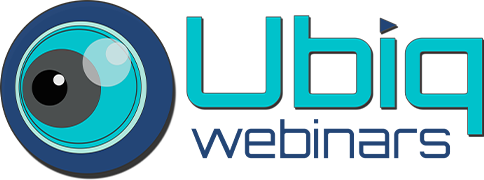22 September 2022
Build a Customer-Centric Medical Affairs Organization
Medical Affairs plays a crucial role in building strategic partnerships with key customers and decision makers. But how do you create the organization that provides customer-centric experiences to any customer looking for help? This event explores the building blocks required to put the customer first and how to build effective cross-functional digital transformation partnerships to enable Medical Affairs to provide meaningful experiences to all medical customers.
27 September 2022
Think like a CEO: Empowering Customer Teams with Insights to Make Growth Decisions
Successful CEOs are able to empower their teams to make decisions that positively impact their organization by providing a shared vision, clear information and direction. This session focuses on the strategies needed to help transform the way your teams think and how to help them make decisions that align with your go-to-market priorities and growth plans.
20 October 2022
Leveraging Stakeholder Relations with Omnichannel Tactics
The impact of the pandemic has accelerated HCP demand for digital resources, it has also had a similarly profound effect on how leaders, managers and other stakeholders make decisions that affect access to medicines and bring forward new evidence. Pharma needs to reflect this in those roles responsible for stakeholder relations – be they KAMs, MSLs or FRMs – and ensure that they are part of each organization’s wider omnichannel approach. This session dives in on what omnichannel tactics are required to leverage stakeholder relations.
27 October 2022
7 Seconds to Success: Learning the Strategies that Work to Improve HCP Engagement
Studies show that TikTok’s seven-second challenge results in longer-than-average video watch times and farther reach across the platform due to people’s short attention span. Pharma needs to reflect on this strategy to determine how to replicate this approach to communicate relevant, brief, and easy-to-consume materials that engage and provide value to busy HCPs. This session explores what’s needed to achieve the perfect blend of content.
3 November 2022
KOL 2.0: What do Customers want from their Experts?
HCPs look to key opinion leaders to provide unbiased, clinically relevant information that guides their treatment decisions. There is no doubt KOLs have the power to influence a product’s acceptance and help it reach its intended target, but post-COVID are KOL’s meeting customer expectations and how are they delivering value in a cluttered digital space? In this session, we explore how to best leverage peer-to-peer contact and how KOL’s can help brands drive high levels of digital engagement and interaction.
10 November 2022
Championing Change: Improving Patient Services by Adopting an Experience Mindset
How can a customer experience mindset help you to improve patient services? How can CX improve patient outcomes, reduce enterprise risk, increase efficiency and create new possibilities for connection and collaboration? In this session, we dive into what it takes to create individualized patient experiences that both help patients and their caregivers, as well as strengthening your brand values to drive competitive advantage.
15 November 2022
Embracing CX as a Guiding Principle: The Current State of Affairs
Life sciences organizations need data-driven insights and solutions that provides a complete 360-degree view of their customers and informs how best to act or respond. To stay ahead of the competition, companies must now be open to engaging with their customers anytime, anywhere, and ensure that every conversation, visit or view is relevant and meaningful.
Join this roundtable discussion to hear from industry experts on where pharma stands on CX and how to get ahead of emerging trends in customer engagement that will impact how you deliver the omnichannel, personalized approach you need for you business. The panel will share what they’re doing to make CX a central theme in their customer operations, the challenges they’re working to overcome and the impact these efforts are having.




